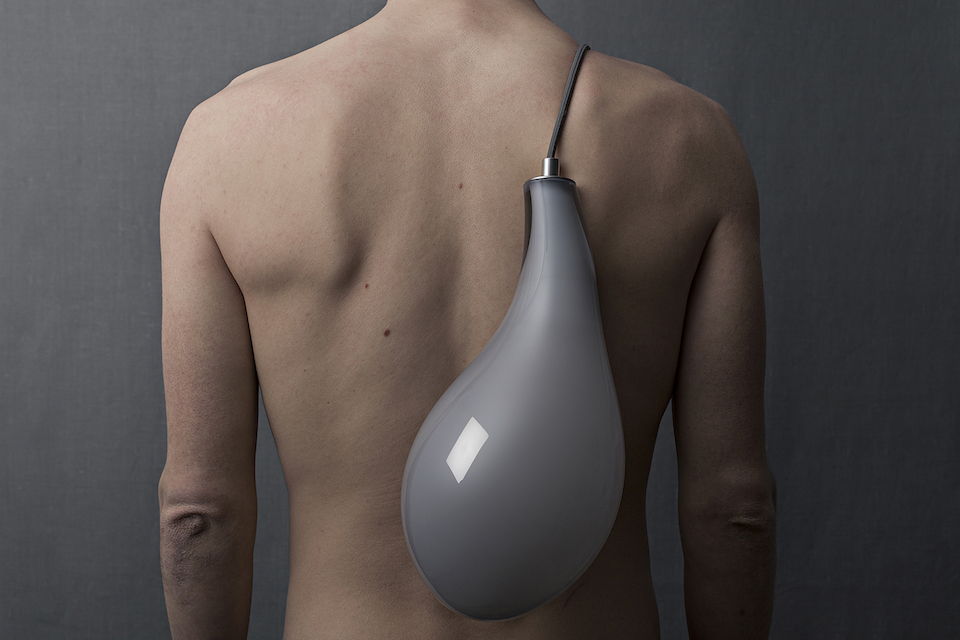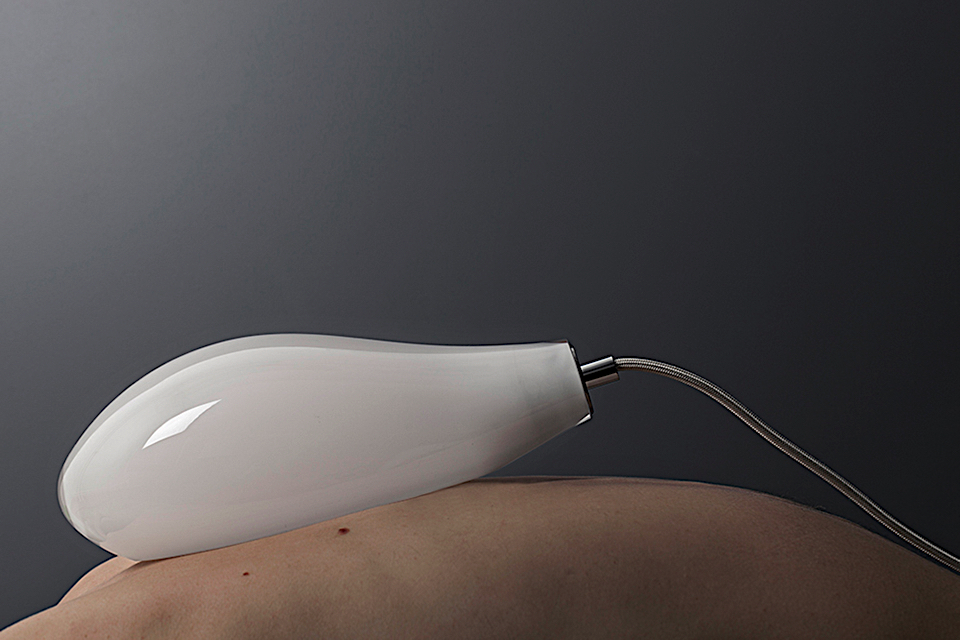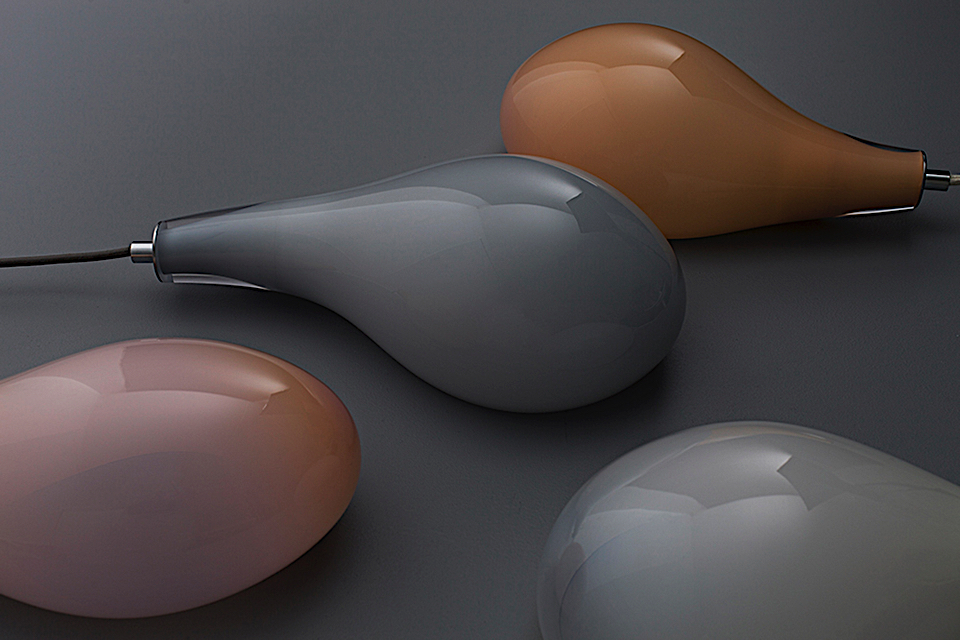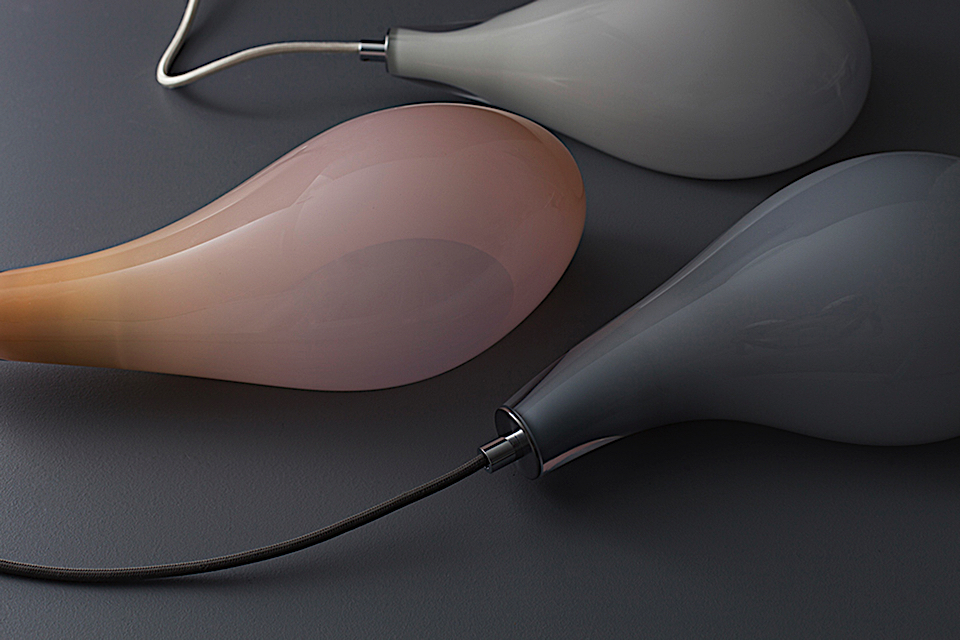MILAN THE SALONE
living together #Milan 2018

photo by ulrika kestere
At Salone Del Mobile Milano, Swedisch design studio ‘Stoft’ showed a selection of their new work. Amoung them the ‘Leech’ collection, a collection with leech-like lamps in mouth blown glasses. Talking to one of the industrial designers of Stoft, Joel Herslow, we learn more about Stoft and their collection Leech.
Can you tell something about the concept of the Leech collection? What is the story?
The Leech lamp clings firmly onto our walls, creating a symbiotic relationship with its user. By letting it feed on us – it gives us light in return.
The living together of two unlike species dependent on each other for survival is the concept of symbiosis. In a world where competition drives evolution, symbiosis might seem foreign. But without people the electric light would be the first thing to die out. On the other hand, in the society we have created for ourselves we are utterly dependent on that same light. It affects us biologically and emotionally, and occasionally we even use light as a metaphor for life.
Leech can be mounted on walls, be hung from the ceiling or placed on any flat surface as a table lamp. Each lamp is unique in its form and the color will vary slightly because of its handmade nature.
What is your starting point behind your work?
Our work always starts with something that inspires us and that we want to express in our product. It almost becomes like a script, a storyline that we keep as the core of the project. Alot of the time we don’t know what the outcome of the project will be, we let the story set the perimeter and lead us to the end result.
Where do you source your inspiration from?
I think we collect inspiration along the way, different starting points or seeds that lie waiting before they can start to grow. A great interest to all of us to visit the producers and learn everything we can about the different crafts. But I think what makes us different is that this is not enough for us to motivate the starting of a new project. Because at the same time as we collect inspiration and stories about the craft, we get inspiration from other directions.
It could be what’s happening in the world, natural phenomena, questions in our society or personal memories that we feel we want to communicate. So this is when it happens for us, when two or more stories in a very natural way find each other, that together create two or more layers to the product. Instead of having many ways of illustrating a concept, it becomes narrowed down since we want to communicate more things, and we know how the product must look to communicate these stories, in order to be honest.
Can you tell something about the process of the Leech collection? What materials are used?
From the idea of making something that can be both beautiful and a bit gross at the same time, leech started as doodles on a paper. From our experience of mouthblown glass we knew that if put in to skilled hands glass can almost get the appearance of something organic. Knowing that, glass was the natural choice of material. The Leech-like glass lamp is mouth blown in Bergdala, Sweden, designed to embrace all the natural and organic qualities of the mouth blown glass. Every lamp is unique, something we value a lot and makes that feeling or something organic all the more real.
What are the key elements of your work?
I would say our work is an extension of the story we want to communicate with our projects, and so draws its appearance and shape from what inspires us. That could be a traditional craft, a material or an old children’s tale. We do believe in the function of the product as well, so the result is usually a blend of the poetic and the functional.
Interview by Isabeau van Maastricht

photo by ulrika kestere

photo by ulrika kestere

photo by ulrika kestere

photo by ulrika kestere

photo by ulrika kestere

